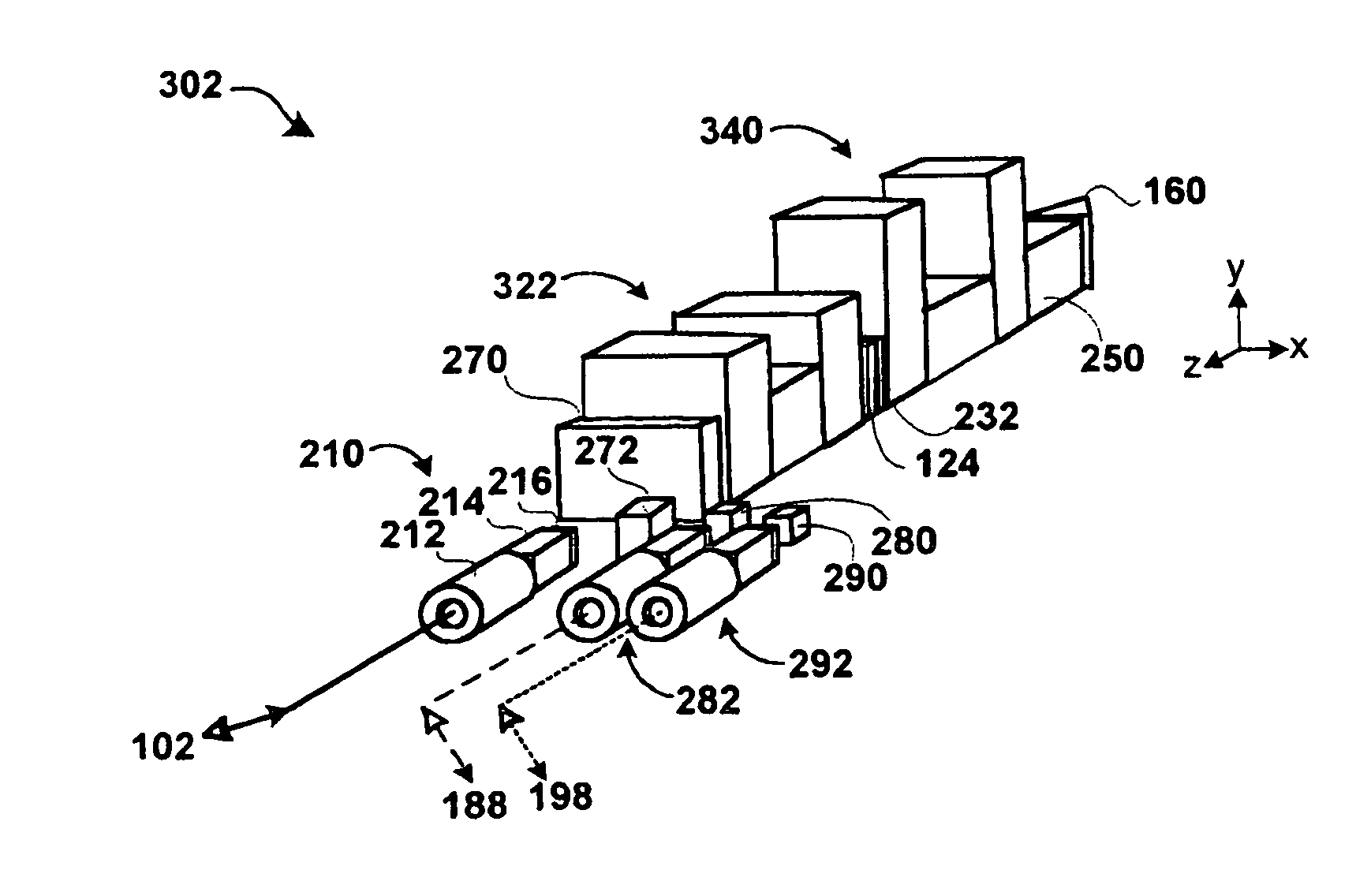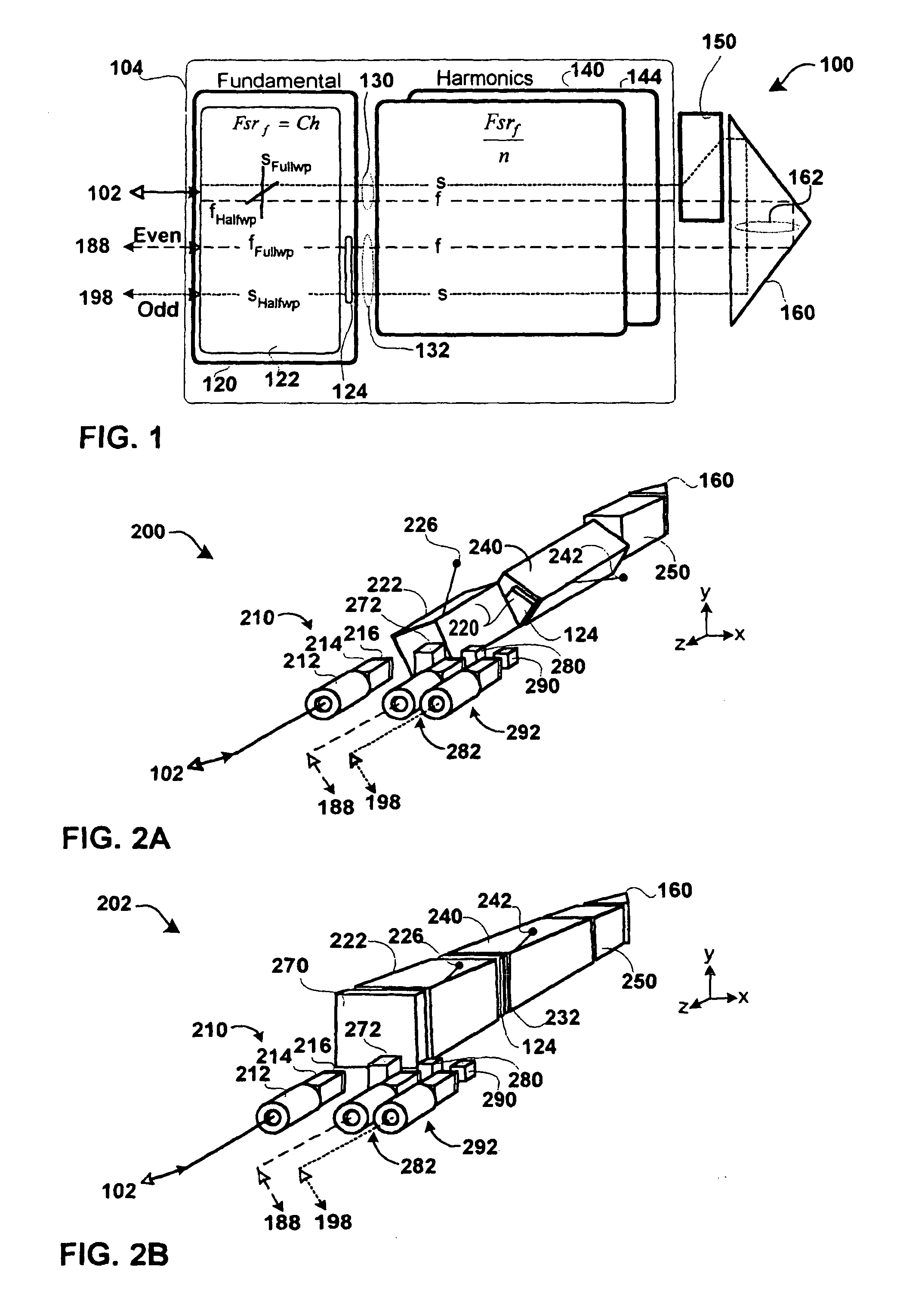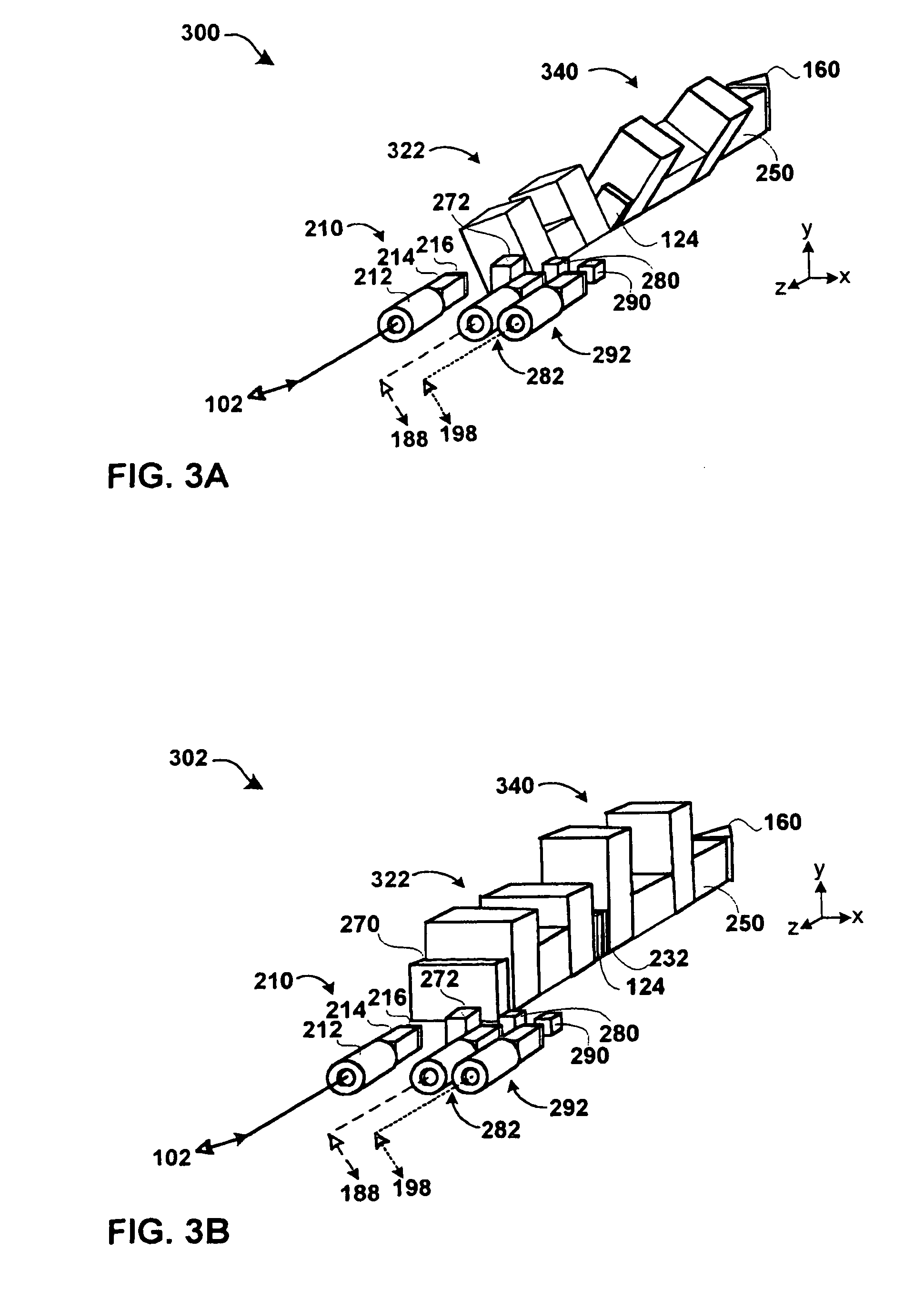Optical interleaver and filter cell design with enhanced clear aperture
a clear aperture, optical interleaver technology, applied in the direction of multiplex communication, polarising elements, instruments, etc., can solve the problems of limiting factors such as noise and inter-channel interference, and the requirements for optical filters used in any of these applications are very demanding, so as to improve the integrity of optical signals and facilitate packaging
- Summary
- Abstract
- Description
- Claims
- Application Information
AI Technical Summary
Benefits of technology
Problems solved by technology
Method used
Image
Examples
Embodiment Construction
[0054]Various optical interleavers, filter cells, and optical components are disclosed that can be used in a range of telecommunications and other applications including optical multiplexers / demultiplexers and optical routers. An example optical interleaver embodiment includes an optical processing loop which allows multi-stage performance characteristics to be achieved with a single physical filtration stage. Optical processing on the first leg and second leg of the loop improves the integrity of the optical signals by effecting complementary chromatic dispersion on the first and second legs.
[0055]FIG. 1 is a hardware block diagram of an embodiment of an optical interleaver 100 with an optical processing loop 130, 162, 132 formed by a single stage 104 optically coupled to a splitter / combiner 150 and retro reflector 160. As used in this application, optically coupled should be interpreted broadly to encompass optical signal passing between two optical components directly, without an...
PUM
 Login to View More
Login to View More Abstract
Description
Claims
Application Information
 Login to View More
Login to View More - R&D
- Intellectual Property
- Life Sciences
- Materials
- Tech Scout
- Unparalleled Data Quality
- Higher Quality Content
- 60% Fewer Hallucinations
Browse by: Latest US Patents, China's latest patents, Technical Efficacy Thesaurus, Application Domain, Technology Topic, Popular Technical Reports.
© 2025 PatSnap. All rights reserved.Legal|Privacy policy|Modern Slavery Act Transparency Statement|Sitemap|About US| Contact US: help@patsnap.com



